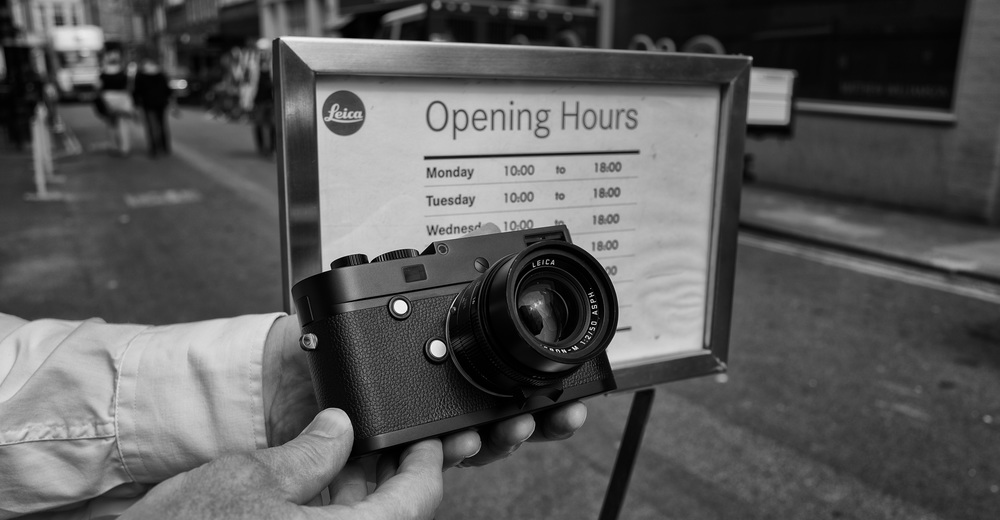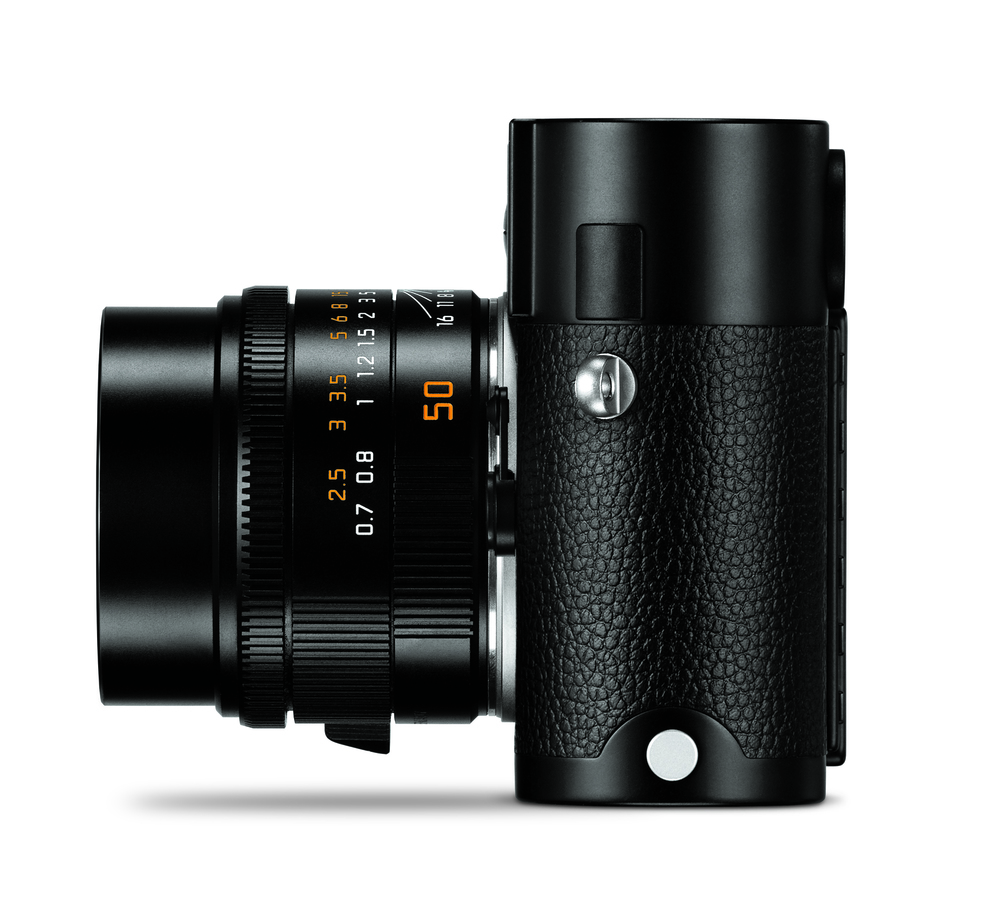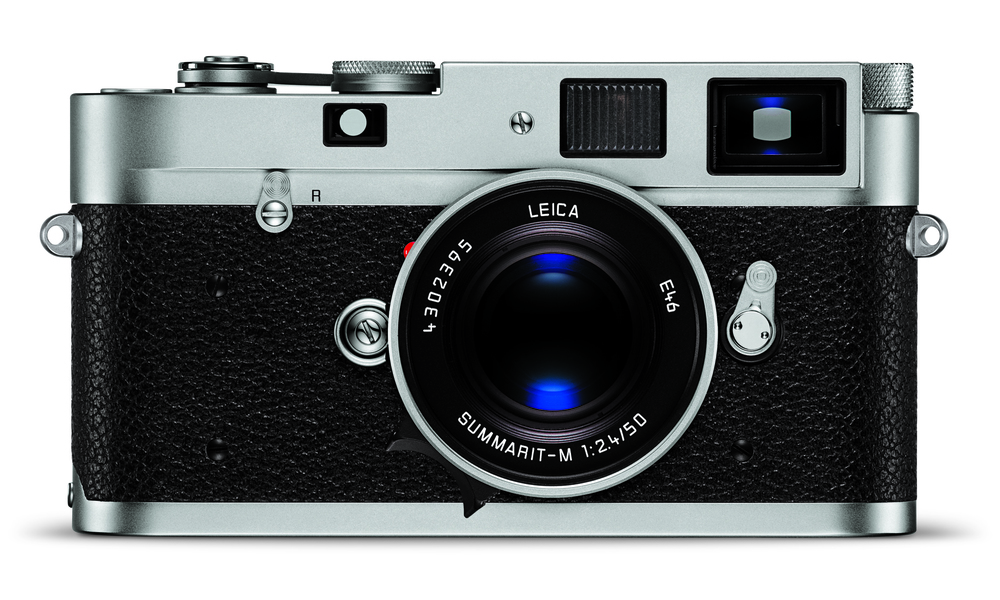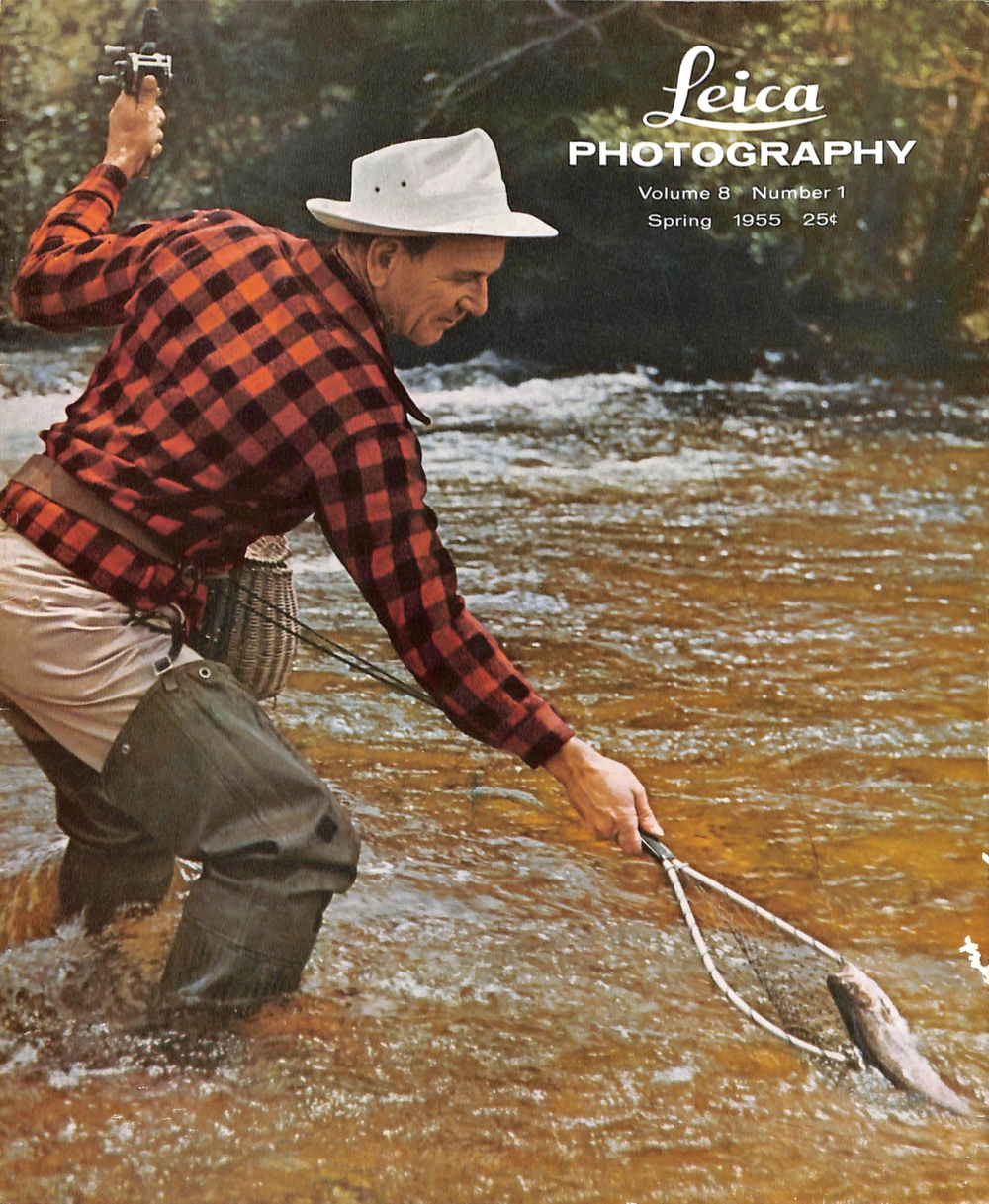
Most goods you buy depreciate in value over time. It’s a law of consumerism. Few items, with the possible exceptions of special editions, fine art and jewellery, stand a cat in hell’s chance of selling for more than you paid. So why do people have unrealistic expectations when they buy a new piece of technical equipment, whether computer or camera? Because they do; I am constantly being told how much loss has been made on a camera, not to mention a computer or smartphone, as though there is something particularly unusual about this.
These things will lose value. For starters, in Europe at least, you can immediately write off the tax element—in the UK this is 20% so a £1,000 camera is worth only only £833 the minute you hand over your credit card and the sale completes. Horrific, I know, but true.
With expensive items, such as Leica M bodies or lenses, this immediate mental write off of tax is essential, not just because it is sensible but because many such items are sold to individuals who own businesses and can therefore recover the tax immediately. It’s not strictly legal—the camera must be purely for business use if the tax is recovered—but this is a very grey area. So anyone buying a tax-free item will have a lower baseline for depreciation and will not suffer as much on resale.
Tax write off
For us poor folk without a means of recovering VAT, that tax is a complete write off and we should not blind ourselves to the fact. In your mind’s eye, just deduct 17%¹ from the retail price as you step out of the shop or receive your package from Amazon. It’s kinder in the long run.

From there on it’s a downward slope. I pay close attention to depreciation and try to estimate resale values along the line. Since I buy and sell equipment frequently, sometimes mainly for test purposes and seldom keeping anything more than two years, I need to keep a close eye on lifetime cost.
Typically, I depreciate by 17-18% immediately (to arrive at the pre-tax value), then accrue monthly depreciation based on a rough estimate of what the item will be worth when I come to sell it. It works well and I am always able to see an approximate value of the asset.
As a result I do not harbour unrealistic notions of value, nor am I ever surprised by the resale price—except in those rare cases when I return more than my estimate would suggest.
Depreciation = rental
Usually, I look on depreciation as rental. If it costs you, say, £50 a month in depreciation over the lifetime of a device, think of this as a monthly rental. Would you be happy to pay £50 every month for the pleasure of owning this or that piece of equipment? Usually, when reduced to a monthly amount, the loss is more bearable.

Let’s take an example. Currently a six-month-old Mark II Leica Monochrom sold through a reputable dealer would realise £4,500 after commission. You might get more on eBay but don’t forget the selling costs and PayPal charges that can add up to 15%, not very different to the commission a dealer would charge on a sale-or-return basis. Surprisingly, too, the dealer will get you a better price than eBay because he has to offer a warranty and his reputation is at stake.
Instead of rushing to grab that £4,500 now, perhaps because of a worry over falling future values, let’s work out what it will be worth two years from now. We have a very good guide from values of the original Monochrom. They are still fetching £3,400 after selling costs, so it’s a reasonable assumption that the latest M246 will raise £3,500 after a further 24 months of ownership. Bang goes another £1,000.

But wait. That’s £1,000 over two years during which you have the further pleasure of using this superb camera. It equates to £42 a month. Now I ask the question: Would you pay £42 a month to rent a Leica Monochrom 246? If you are a Leica fan I suspect the answer is a definite yes.
Understand your market
The trick behind this is to understand your market. I understand Leica because I keep a close eye on the market and I can chat with friends such as Ivor Cooper at Red Dot Cameras. I am less familiar with other brands, many of which depreciate far more quickly and steeply. But Leicas do hold their values better than other marques. Leica M digitals, despite the so-called “digital rot” common to all modern cameras, do have a fairly good record all things considered.
Take the M8, which was launched nine years ago. At that time it cost around £2,500. It now sells for £700 to £800. That’s a loss of, let’s say, £1,700. Worrying. But not really. If you’ve used your M8 for all this time the depreciation has been £15 a month. Let me ask the question again: Would you have rented a Leica M8 for £15 a month back when it was announced?
Even Leica’s first really serious digital, the Digilux 2, which arrived in 2004, is still selling for around £600 compared with its original price of, from memory, around £1,400. Again, that’s pretty good going at a depreciation of a piffling £6 a month.
Panasonic-based Leicas, such as the D-Lux series, hold their values better than the Panasonic version, which often sink into obscurity after only a couple of years. The extra cost of the Leica version is more than recouped on resale if you keep it for a few years. One of the main reasons, apart from the red dot, is the better warranty and after-sales service provided by the German company.
But there’s no getting away from depreciation, particularly that painful hit in the first year. There is one way to minimise your loss and keep your “rental” cost low: Buy used equipment. This is a particularly rewarding game with Leica stuff. Buy at the right price and your onward running costs can be low. Buy a good used M240 for, say, £3,300 and it has already lost £2,000 in value but could well be just as good as a new camera. The same goes for expensive lenses; mostly they have been well looked after and, after only one or two years, are likely to be in perfect condition.
My tip is to buy from a reputable dealer where you have a comeback if there are any hidden problems. With seemingly bargain purchases from on-line auction sites you have almost no redress if things go wrong or if the item is misrepresented. Dealer support is even more important with older equipment, particularly lenses.

Film cameras can appreciate
What of Leica film cameras? They do well on depreciation, better than the digitals as you would expect. Late-model cameras obviously lose value in the early years but it depends on the model. Even with film cameras you need to deduct that tax as soon as you’ve bought it new. Of the current film cameras, the MP and M-A are likely to be better bets than the M7 and will lose less in the short term.
A ten-year-old MP now sells for around £2000 and has seen nil depreciation in pound terms. What a bargain if you’ve loved and used that camera since 2004. In real terms, though, we can see it has lost £1,400 or £11 a month because the camera is still current and a new model would cost £3,400.
The semi-auto M7, a later camera, fares less well. It currently costs £3,400 but you can pick up a ten-year-old version in good condition for £1,200. Again, though, it’s peanuts in depreciation terms if you’ve owned from new.
Delving back into the past, the story is similar but even more encouraging. At some point film cameras pass through their original pound value and appear to appreciate (but, of course, not true value which continues to decrease). For instance, the first M film camera, the M3, would have cost around £100-125 in 1954 and you will pay perhaps £500 for a good 50- or 60-year-old in 2015. So has it quintupled in value? Not quite. If you look up the value tables you will see that £100 in 1954 is almost identical (representing two to three months’ wages) to the £3,100 cost of the current Leica M-A (a camera without metering that can be compared directly with the early film Ms). If anything, it was far more difficult for the average photographer to rustle up £100 in 1955 than it is for us to find £3,000 in 2016.
£3.50 a month for an M3
So if you think in real terms rather than price tags, the M3 has “lost” £2,600 in real value over 60 years. Ah hum, £3.50 a month? Would that be a reasonable rent for an M3? Without a doubt.
Buy a used Leica film camera now and its value is likely to keep pace with inflation. A ten-year-old MP for £2,000 will last decades and cost you almost nothing to run.
The moral of this start-of-year appreciation of depreciation is that a realistic attitude to value loss is essential for your sanity. Work out your depreciation and divide it by the length of ownership and you will find that your camera, which gives you a lot of pleasure, is not so expensive after all. Often, you will decide not to cut your losses but to continue enjoying that wonderful M 240 or Monochrom for a few more years. Just rent it to yourself, get out and enjoy using it.
NB: The above calculations are assuming you’re buying for cash. If you are borrowing, the interest cost has to be taken into account.
_______________________________________
- The VAT element of a retail price is just under 17% because the total figure includes 20% tax based on the net price. So to get back to the net price, in effect, you divide the retail price by 120 and multiply the result by 100—that’s 83.333 which leaves the tax element as 16.667 or rounded to 17%). As Colin points out in his comment below, the simpler formula to calculate VAT content is to divide the retail price by six. Many ways to skin a vat, but the result is the same↩︎

A bit of a late comment here… More of an observation really, but this is a very reasoned way to look at the hobby, I realise that I have not always made the best decisions, but I am getting better at it.
The observation though? At the beginning of this piece, you mention the £167 per £1000 that goes to the government in taxes… You consider them a loss?
Surely not, how enriched do you feel about that extra road-hump, or the money with menaces brown envelope by the hand of an expensive computer that dropped through your letter box this morning?
I think we should be told.
My tongue is always firmly in my cheek and won’t be drawn into a discussion on the merits of taxation. But the point I make is valid – the VAT element is a part of the value of anything you buy that evaporates as soon as you leave the shop.
It is well recognised by dealers in expensive cameras that a surprising number of buyers take the VAT invoice and recover the 20% tax through their companies. Even an expensive Leica is easily explained as a business purchase. So when they come to sell on their gear they do so from a lower starting point. Those of use who are not VAT registered have no such benefits. So loss it is; it is the minimum depreciate hit you must account for as soon as you open that exciting box.
It is impossible to generalise about these things, but I would say that for current or recent models your way of viewing an annualised cost as a form of rent is a good one. About a year ago, Leica prices were grossly high in the UK for those of us living outside the Sterling area, caused by the over-inflated value of Sterling and the difference could be hundreds and, in some cases , thousands of Euros. The same also applied, believe it or not, to purchasers living in the Sterling area, but the preference seemed to be to ‘buy local’ with a dealer you could walk into, if things went wrong. However, the more recent special offers and price reductions on older models from UK dealers may, indeed, be an attempt to ‘offset’ the inflated pricing in the UK market. If ‘Brexit’ occurs the value of Sterling will probably move, but only time will tell if this is good or bad for Leica owners.
Collector item prices are, of course, another kettle of fish. If you bought an M3 or, say, a pre-war black and nickel II Model D with nickel lens in good condition for £500 5 years ago, it would, probably, be still worth £500 today. The black II Model D with lens cost £22 in 1933 (the now less valuable chrome model cost £23-4s in 1933; the reverse of today’s situation) which is £1377.20 today according to one website I have consulted. It is, of course, somewhat nonsensical to compare prices over a period of 83 years as so many factors have changed in that time; such as average earnings and, indeed, costs. The II Model D is in a sense, however, pretty much the same thing as it was from a usability point of view as it was 83 years ago and added to that it has become a collector’s item that broadly retains its worth. What the M240, M262 etc will be 83 years from now from a usability or collector viewpoint is impossible to predict. Digital goods, including cameras, have brought the concept of ‘planned obsolescence’ to new heights probably not seen since the US car industry of the 1950s and 1960s, but some of the products of the latter are now starting to fetch really high prices.
Those hoping to live long enough to see a profit or even a ‘flat line’ in their ‘investment’ in a digital Leica would do well to remember what John Maynard Keynes said about what would happen ‘in the long run’.
William
William, thanks for this interesting and useful addition to the conversation. I am sure you are right on the prices of classic cameras. I suppose prices have been on a plateau in recent years because of the lack of inflation. This could change, of course.
A timely reminder that tax is a write off. I’ve met people who buy cameras or lenses and then expect to resell them after a few months for even more than the pre-vat retail price. Curiously, now could be the best time to buy a Leica camera or lens, especially M equipment which has good staying power. It’s generally acknowledged that the British pound is currently overvalued, largely because of the on-going Euroland crisis. Leicas, always expensive, are now quite good value in the UK–especially the Q–and we have seen some discounting of M bodies and lenses. Even Leica UK had a successful £500-off scheme on the M240 during the latter part of 2015. I don’t think this situation is going to last. The pound will fall in value in 2016 and we will be fortunate if Leica doesn’t decide to increase prices. Buying a new lens or body now rather than later in the year could be good sense.
"The VAT element of a retail price is just over 17% because the total figure includes 20% tax based on the net price. So to get back to the net price, in effect, you divide the retail price by 120 and multiply the result by 100—that’s 83.333 which leaves the tax element as 16.667 or rounded to 17%) ↩︎"
–
Or simply the retail price divided by 6.
–
Keep up the good work.
Indeed, Colin. Many ways to skin a vat.